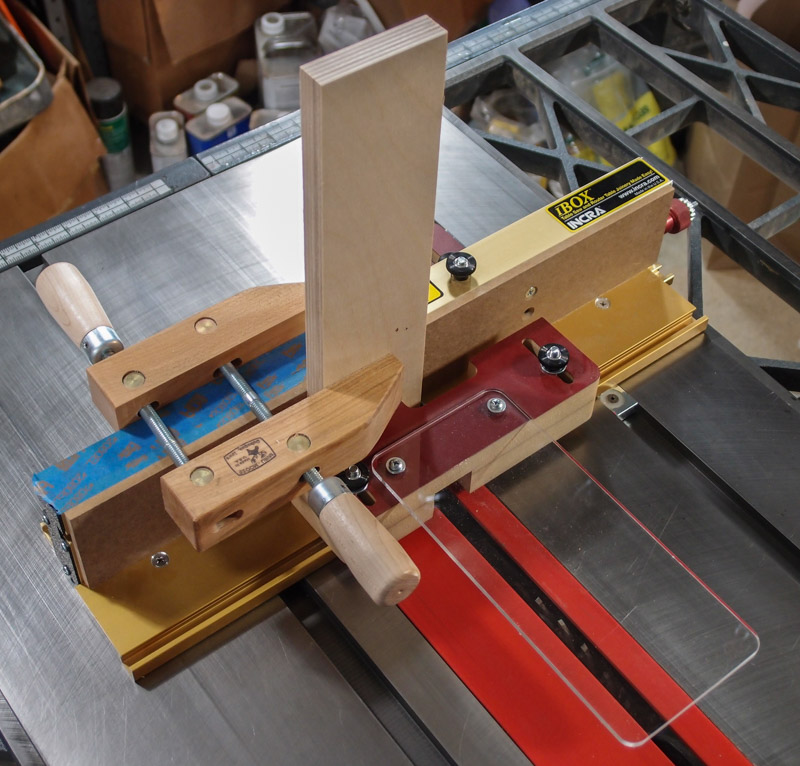
Fixes for my Incra i-BOX jig
The Incra i_BOX jig creates box joints using either a table saw or a router table. I use a Forrest dado blade with a table saw for this work. Based upon positive reviews found in woodworking sites on the web, I ordered the jig directly from Incra a couple of years after the initial release. They had a deal on the jig and a dado blade combo .

Upon delivery, I noticed that there were a couple of quality issues. First, the "T-square" piece mounted on the rear of the miter bar had a rough mating edge where it contacted the aluminum body. It is the piece that ensures squareness of the jig to the miter bar. The burrs created a high spot near the center. As a result, it rocked left and right with very little pressure. There was a telltale gap showing.
After removal of the steel "T-square" piece, I hand-filed the edge of it where it contacts the aluminum extrusion, making it smooth and flat. Here's a photo showing the piece after filing and remounting. (Sorry, I didn't take "before" photos showing the problem.)
Note the solid contact now between the steel piece and the golden anodized aluminum. The jig won't rock now.
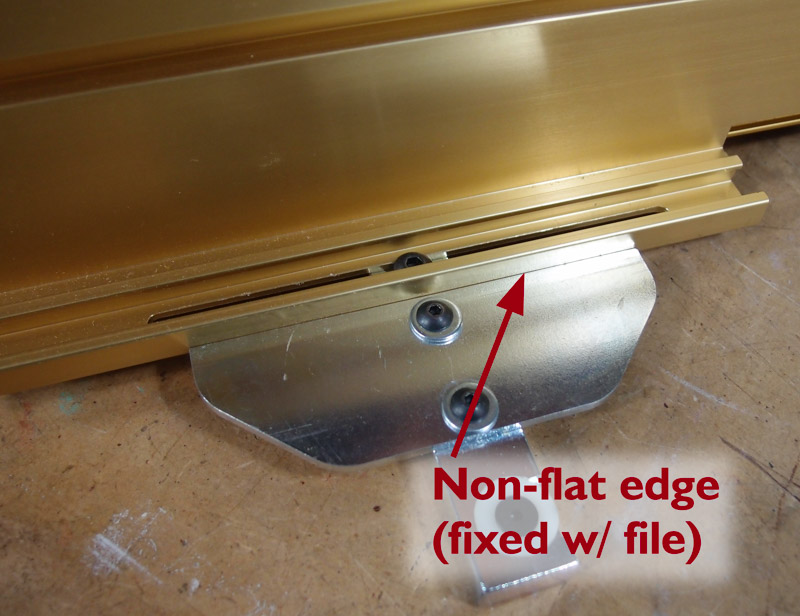
The next problem was a little tougher and required disassembly of the jig's working parts. The steel guides that positioned the work for the sequential cuts were visibly askew. There was a gap between them on one end when they were adjusted to be touching. Note the gold-anodized aluminum piece that mates against the steel plates and how there is not continuous contact. It was obvious that the end of the aluminum extrusion was not machined square or flat.
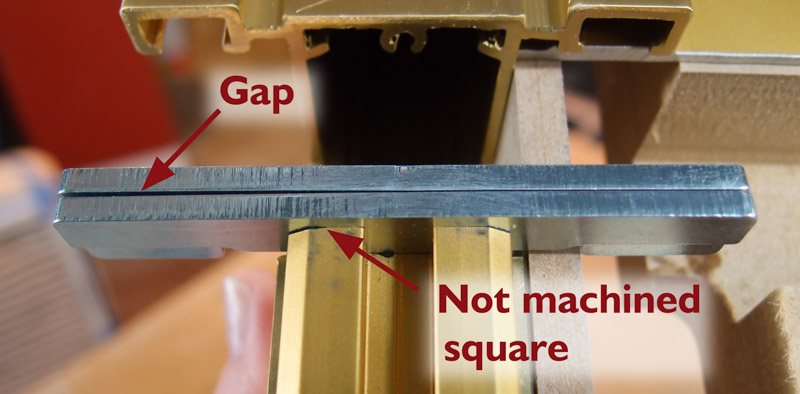
I pulled apart the jig to be able to face the ends accurately.
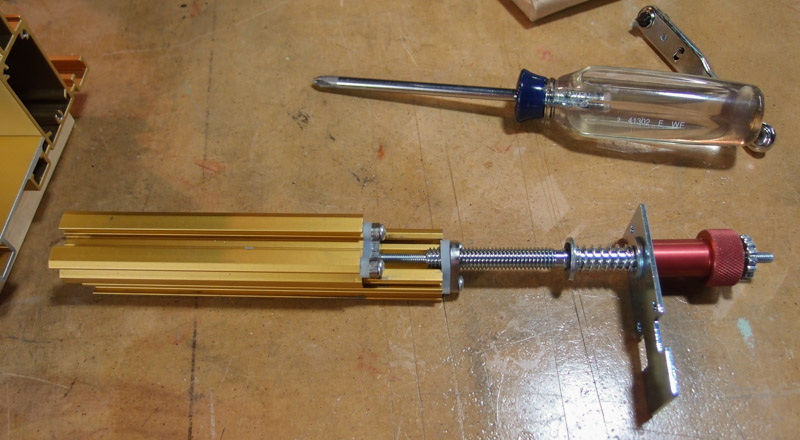
When I examined the ends of the aluminum extrusions, I saw this...
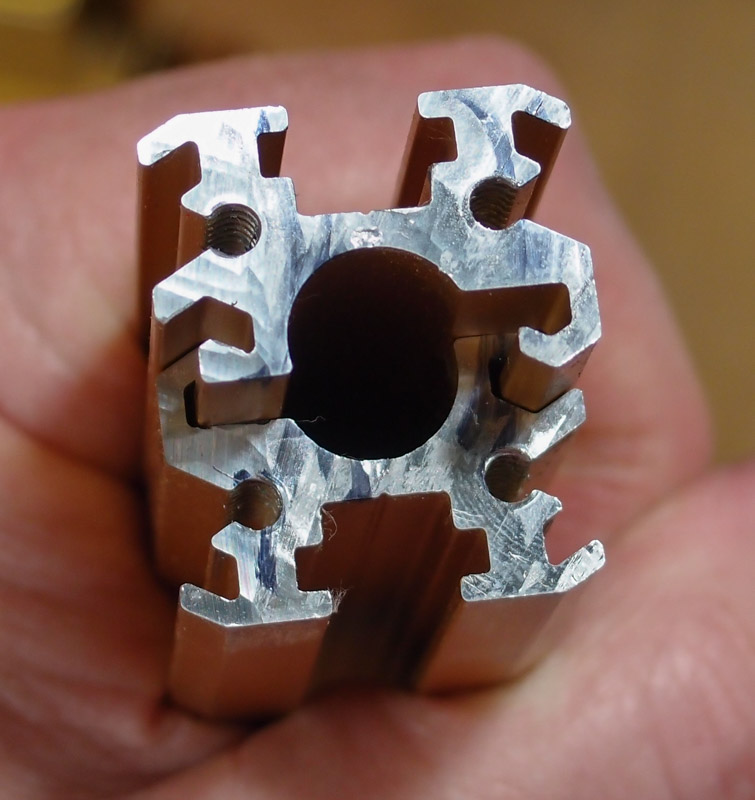
These surfaces were not flat by any definition of the word. It looked a bit like re-work by the factory, but done poorly. I used my disk sander to flatten and square the ends of the aluminum.
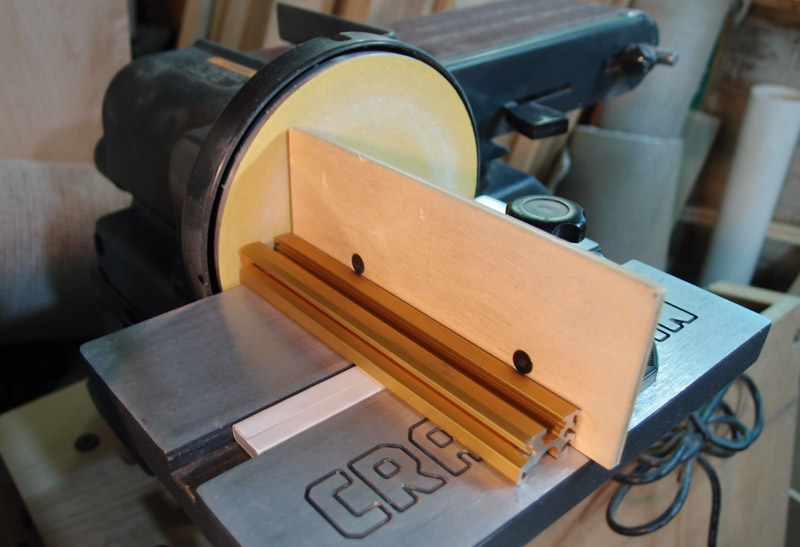
I made sure that the miter gauge on the disk sander was perfectly square to the sandpaper wheel, and took light passes. It took no time at all to face the ends perfectly flat, smooth, and square. See the completed work in the photo below.
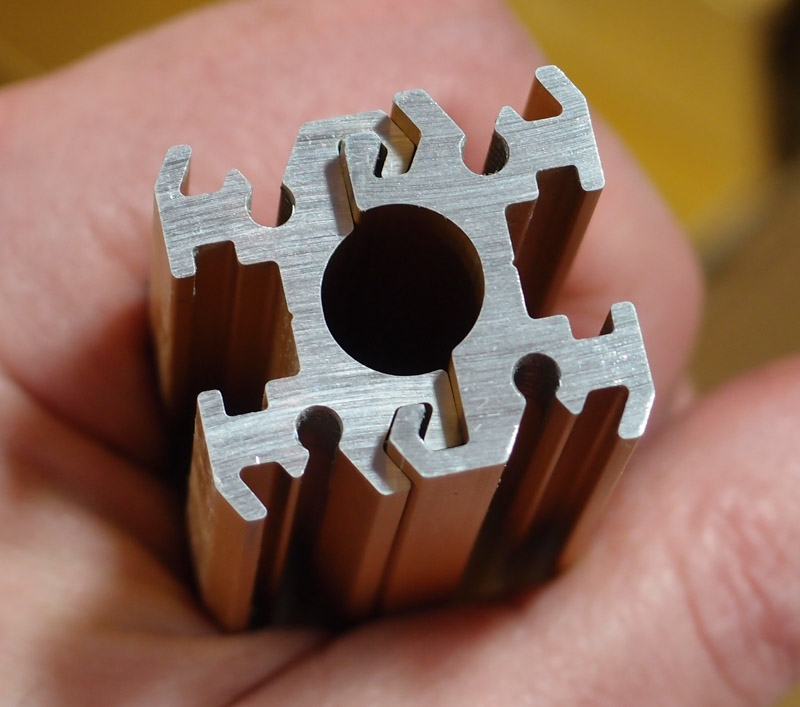
Upon reassembly, the reworked aluminum faces mated perfectly to the steel plates. The plates are now parallel to each other, and there is no angled gap when they are adjusted to touch together.
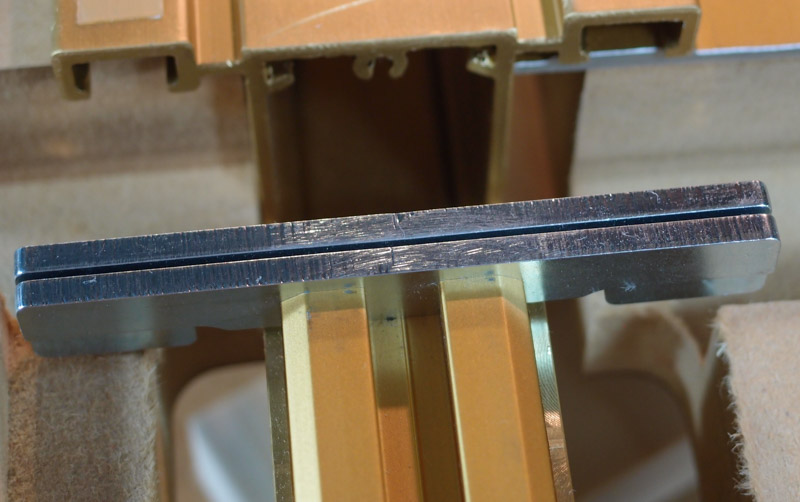
Testing, testing
I made a simple 3/4" Baltic birch box to test the unit. I used a Forrest Dado set with a 1/2" stack - about all that my contractor's saw arbor shaft can handle. Here's the box shown dry-fitted immediately after cutting the box joints.
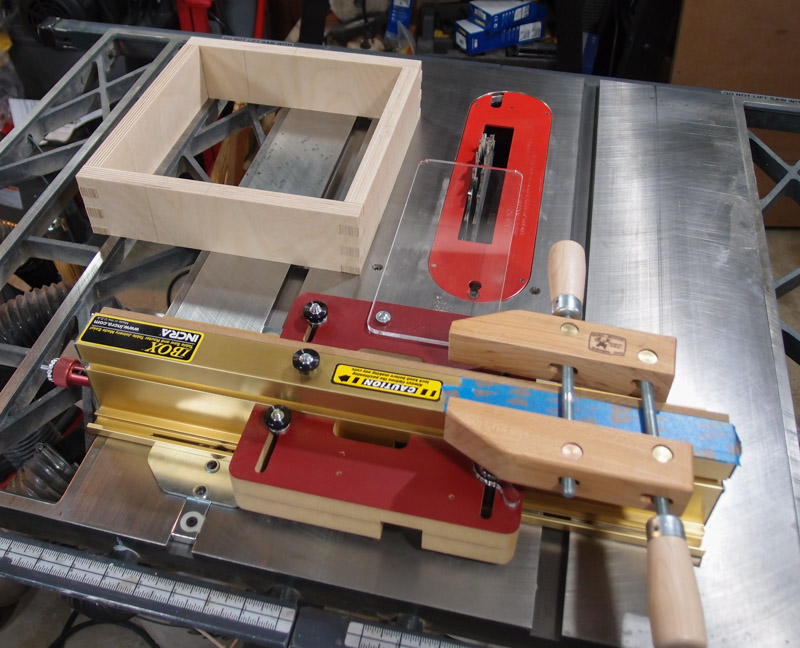
After finishing, here's how the box turned out.
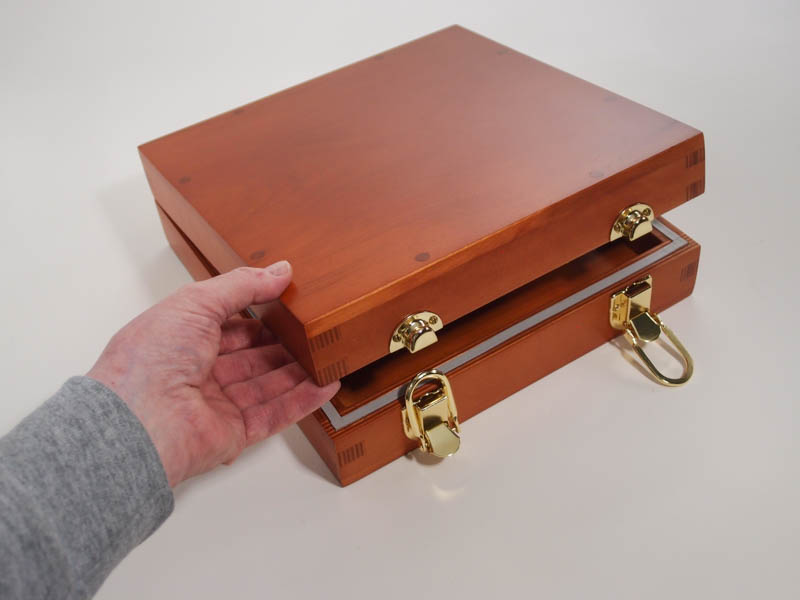
Page created by Bill Schneider 4/7/2018